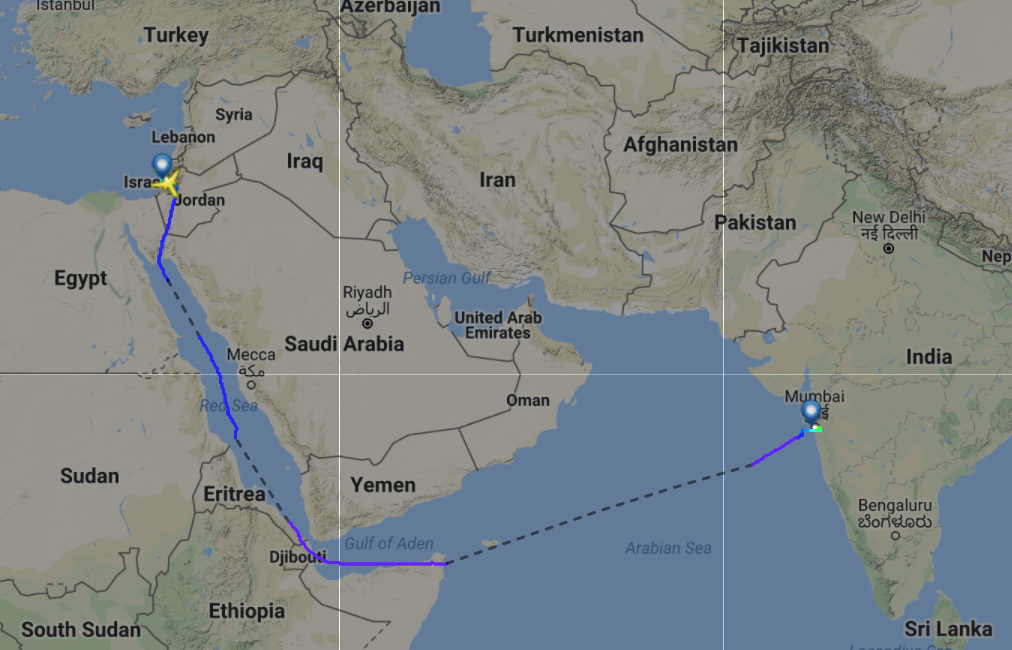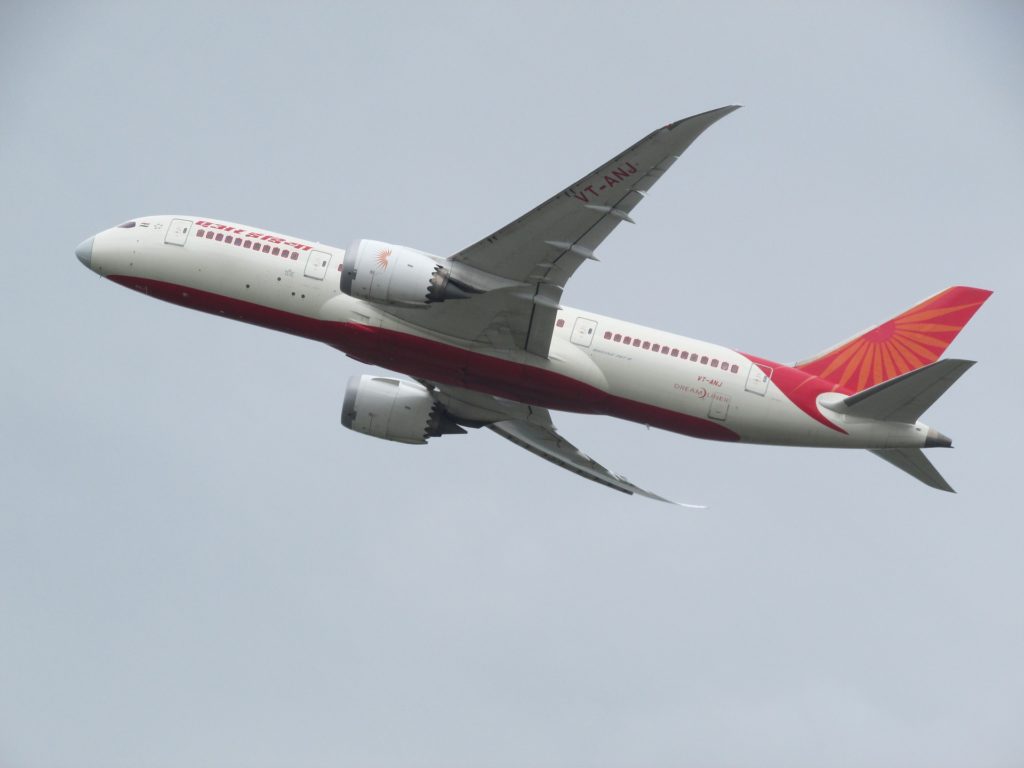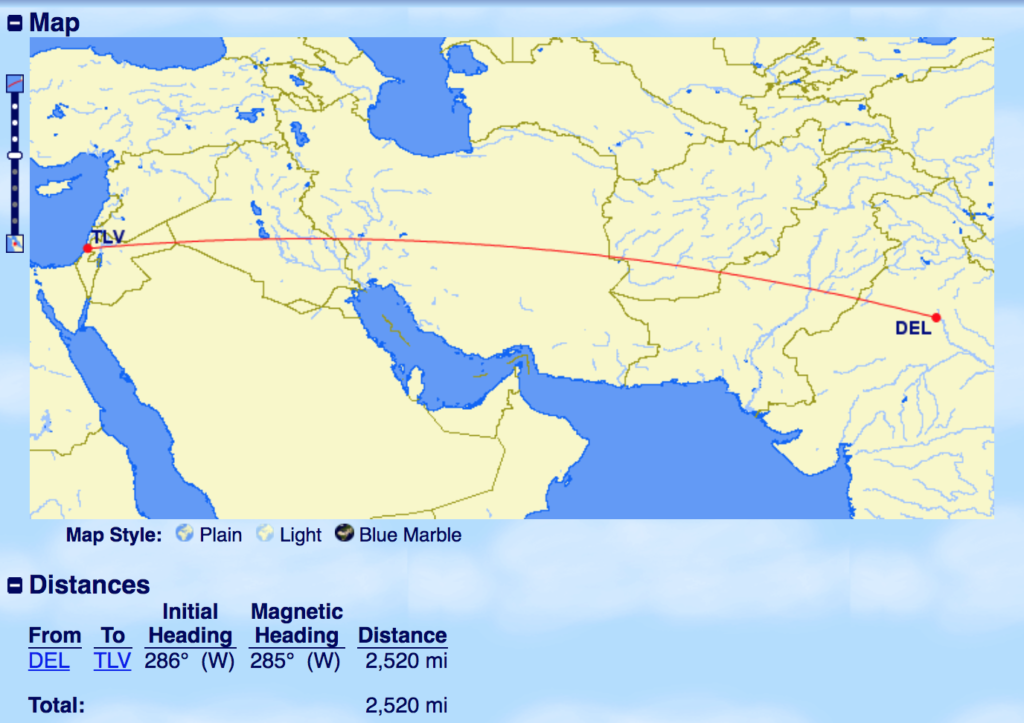Last month, I wrote about a new Air India Delhi Tel Aviv flight, that is ready to fly this month onwards. Air India had planned to launch flights to Israel from March 20, 2018, with the following schedule. March 20 came and went, however, the flight is ready to take off on March 22 with the following schedule:
AI139 DEL1650 – 2045TLV 788 247
AI140 TLV2215 – 0900(+1)DEL 788 247
The critical issue with flights between India and Israel is the circuitous route that is taken to fly to Israel, given that Saudi Arabia does not allow Israeli airline, El Al, to use their airspace. Hence, the El Al 4 times a week flight to Mumbai ends up taking over 7 hours to fly rather than the usual 5.5 hours it should take. Take a look below at this screenshot via FlightRadar24:

In Air India’s case, an individual dispensation was made by Saudi Arabia to allow Air India to fly to Israel, using the Saudi airspace. Saudi Arabia’s Civil Aviation regulator has not confirmed this.

While Air India has announced the flight and it will operate the first flight tomorrow, what foxes me is that the flight time is still 7 hours, for a 2500 mile route. Even Delhi- Istanbul, which is further down at 2800 miles, flies in 6:30 hours.

Map Courtesy GCMap.com
To this, when I asked around, people told me that Air India will still not fly the shortest route to Israel, but it will be better off given they will fly over the Saudi airspace and hence not take as long as El Al. Moreover, I was also told that while Saudi Arabia may have given way, other countries along the way are not as engaging for Israel. I am curious to see how this flight eventually flies tomorrow.
Are you excited to go to Israel? I better check out this route before it becomes a big hit.











The Saga of El Al’s flight to Tel Aviv
https://airlinegeeks.com/2018/03/31/the-saga-of-el-al-air-india-and-saudi-arabian-airspace/
Based on various press reports, both Indian and Israeli, Air India will fly southwest from Delhi and cross the Arabian Sea from the Gujarat coastline, thereby overflying Oman, Saudi Arabia, and Jordan.
Pakistan airspace will not be used.
Iran airspace is obviously a no-no.
UAE airspace is avoided as well, perhaps to keep things simpler.
As a result, this is slightly less than optimal, and the schedule may include some extra padding.
Let’s see what happens.